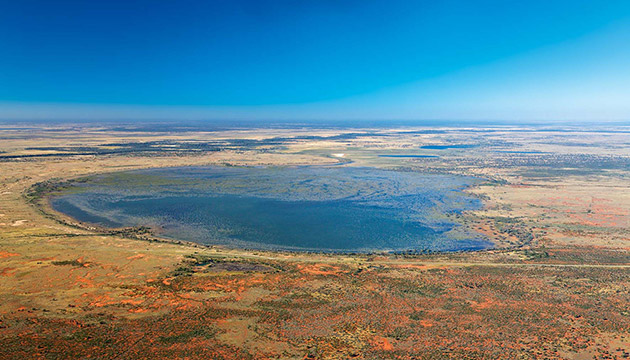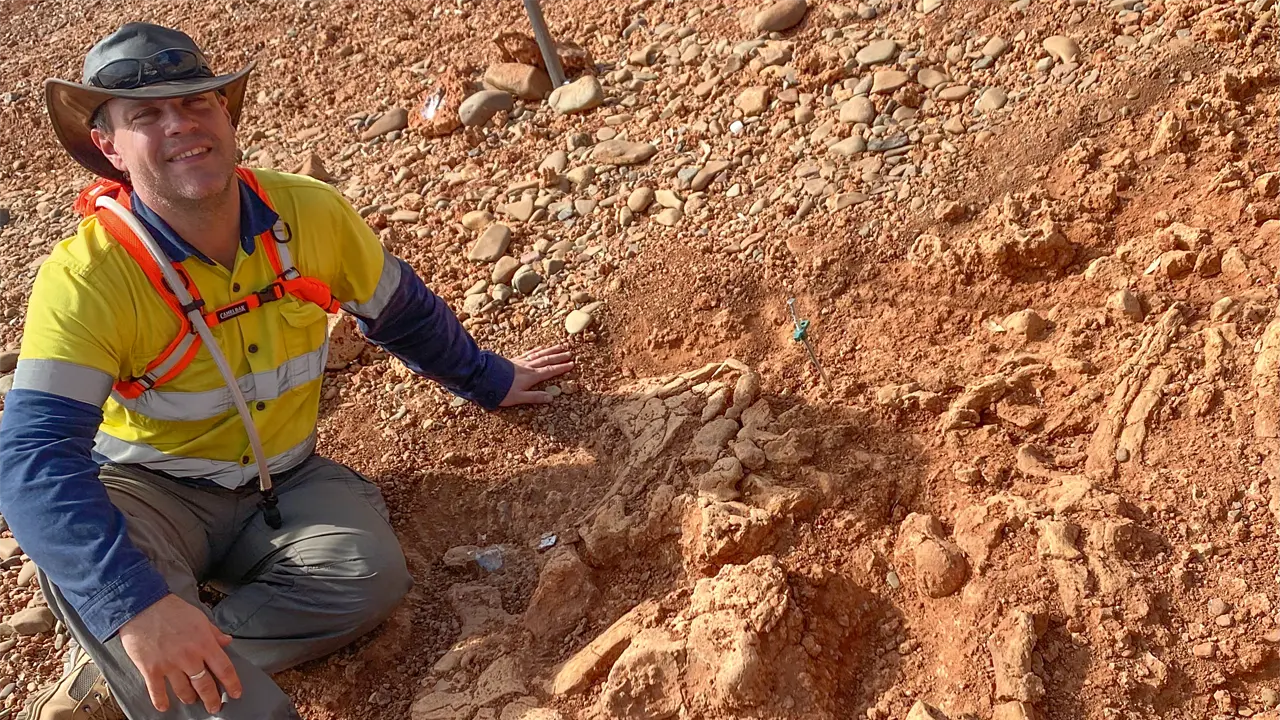Rain and the removal of a culvert have revived a little-known and much-mispronounced gem of the outback – Lake Woytchugga in western New South Wales.
Story By Ken Eastwood
It's amazing what a difference a drain can make. A four-kilometre-wide ephemeral lake in western New South Wales is once again full of life and beauty – due partly to the local council deciding to change the size and shape of a culvert. Birds not seen in the area in such numbers for decades have taken advantage of the temporary water refuge.
About five years ago, the former mayor of Central Darling Shire, Paul Brown, realised that the Crown Land Reserve of Lake Woytchugga, 5km west of Wilcannia, had turned into an unappealing dust bowl. He began looking into the lake’s long history. Its unusual white sandhills are full of Baarkindji artefacts, and human-bone fragments have been found. The Baarkindji named the lake “Woytchugga” (pronounced Why-chewka), which means “moon”, because it would wax and wane like the cycles of the moon, but the lake had not filled since the mid-1990s.
“It was used more and more regularly by motorbike riders and pig shooters,” Paul says. “And there was some illegal sand-mining going on.”
The lake should naturally fill once a decade or so when the Darling River, which is about 10km away, floods. “You need both height and duration for the lake to fill – you’re filling from a small inlet area,” Paul says. “The river has to climb a metre and a half before it meets the lip where it starts to flow into the lake.”
But Paul says it wasn’t just the long drought that prevented the lake filling. “The water would bank up as the river rose – the culvert under the Menindee–Wilcannia Road was dramatically restricting the flow.” The culvert had been installed in the 1980s after the previous wooden bridge had been washed away in a flood.
Harnessing the support of the Western Catchment Management Authority’s High Conservation Value program, the council developed a wetland management plan through Wetlands on Farms, a New South Wales Department of Primary Industries project. As a result, 25km of fencing was erected to prevent the illegal sandmining that was damaging the cultural artefacts, signs were erected and the culvert was changed to a wide structure that allows water to flow freely each way.
This story excerpt is from Issue #80
Outback Magazine: Dec/Jan 2012










